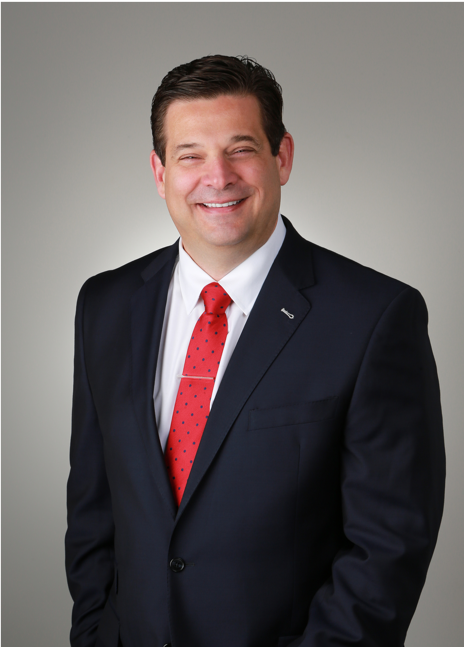- Acne
- Actinic Keratosis
- Aesthetics
- Alopecia
- Atopic Dermatitis
- Buy-and-Bill
- COVID-19
- Case-Based Roundtable
- Chronic Hand Eczema
- Chronic Spontaneous Urticaria
- Drug Watch
- Eczema
- General Dermatology
- Hidradenitis Suppurativa
- Melasma
- NP and PA
- Pediatric Dermatology
- Pigmentary Disorders
- Practice Management
- Precision Medicine and Biologics
- Prurigo Nodularis
- Psoriasis
- Psoriatic Arthritis
- Rare Disease
- Rosacea
- Skin Cancer
- Vitiligo
- Wound Care
Article
Why are so many physicians selling their practices?
Author(s):
An expert weighs in on the factors driving a growing number of dermatologists to sell their practices.

Todd Petersen, Chief Executive Officer of VitalSkin Dermatology,

Todd is the Chief Executive Officer of VitalSkin Dermatology, a world-class dermatology and aesthetics practice management firm., Mr. Petersen has over two decades of C-suite experience, including CEO, COO, CFO, and CHRO roles. He is a growth expert with a passion for new entrepreneurial challenges, revenue growth, improving operations, and building teams and partnerships.
A growing number of dermatologists are selling their practices, with several factors driving this trend. If you currently own or are thinking of starting your own practice, understanding the current practice landscape, trends, and options can help you make the best-informed decisions for your and career.
READ MORE: Today’s practice model options
Age
The most prevalent reason for selling a practice is physician age. According to the American Medical Association, forty-four percent of dermatologists are aged 55 years or older. Many of these doctors have enjoyed the autonomy and independence of owning their own practice, making them skeptical and reluctant sellers. However, as they near retirement, the option to sell becomes far more attractive, driven by the desire to monetize one of their most valuable assets and to create a seamless transition for their patients and their teams.
Accelerating practice growth
While age is perhaps the most prevalent driver behind this trend, it is certainly not the only one; the modern challenges of running a dermatology practice can drive a physician to sell. Increasingly, there are a number of confident, entrepreneurial and ambitious dermatologists who have built up successful practices; retirement for these dermatologists is still in the distant future, so their age is certainly not an issue. Recently a successful dermatologist told us, “I put a lot of time into running the smartest practice possible. It takes a lot of time and attention to detail, but recently feels like I must work harder to maintain my income.”
While dermatologists in this category are still driven to grow and advance their practice, growing their practice is now more difficult than ever. It demands a significant investment in time, entails taking on additional risk, requires additional capital, necessitates new business skills, and increasingly requires a sacrifice of current income in the early stages.
READ MORE: Expert advice: Hire smart, hire nice
Consequently, some dermatologists seek a partner who can help them accelerate the growth of their practice. Their new partner may provide additional capital to build a new practice office, to buy new equipment in order to add new services to the practice, or to help fund start-up losses when new partners or advance practice nurses are added. Selling their practice often allows them to take some chips off the table, but at the same time it allows them to continue participating in the financial upside of a larger practice with an accelerated growth model and maintain a significant leadership voice.
Administrative burden
There is yet another group of dermatologists who are simply overwhelmed by the increasing administrative burden of running a practice. These dermatologists are still passionate about their vocation; they are driven to provide the best care for their patients and their well-being. But these physicians feel weighed down by a heavy administrative burden, including tasks like deciding what insurance networks in which to participate, negotiating provider contacts with insurance companies, dealing with authorizations and approvals, managing billings and collections, and keeping up to date with new rules and regulations. Every year, keeping up with these activities becomes more cumbersome.
READ MORE: How to attract loyal patients
The terrain for smaller practices is tricky. While the health insurance, pharmaceutical, retail pharmacy, medical equipment manufacturers and distributors, and hospital segments of health care have consolidated, the physician segment has been slower to do so. As a result, the balance of power in health care has shifted, and smaller practices don’t have the bargaining power to compete against these big companies. Consequently, small practices become “price takers.” This means they are compelled to take standard pricing and abide by increasingly complex rules.
Additionally, the continual march toward digitization creates new needs for information technology support. Picking, implementing, and supporting the right electronic health record takes specialized talent. New artificial intelligence solutions hold the promise of improved patient outcomes and reduced malpractice risk for doctors. But how do you pick the right artificial intelligence solutions, who pays for it, and how do you keep up with the rapidly changing environment? These are tough strategic questions that are hard to manage without specialized talent.
Recruiting great talent is becoming harder too. How do you find great talent in a tight labor market without settling on someone who is mediocre? There’s also the difficulty of finding and keeping quality staff members, in part because it’s becoming very expensive to offer an attractive benefits package and in part because of employee labor laws. With regulations continuing to evolve on all scales-federal, state, and local-it becomes more and more difficult to stay on top of changes.
READ MORE: Communication is key when marketing your practice
While many physicians just roll with these challenges and accept it as part of being their own boss, increasingly there is a large group of physicians who are looking to be “liberated” from these administrative burdens. One dermatologist in this group recently told us, “People matter most to me – my patients, my staff and my family. The idea of reducing my burden within administration so I can focus on the parts of my life and practice that really matter sounds great to me.”
The increasing administrative burden compels some dermatologists to sell their practice in order to simplify their professional lives. In other words, they are trading their practice for a simpler life and more time: more time to spend with patients, their family and friends, or even to pursue their own passions.
READ MORE: How to manage practice change
As with selling a home, selling a practice is a nuanced exercise with many considerations. This includes, how to ensure dermatologists receive a fair value for their practice, how to manage staff and day-to-day business during the sale process, how to negotiate a transition, or lack thereof, with buyers, and the legal, financial, and administrative aspects of preparing a practice for sale. Over the course of the year, we’ll be walking you through steps necessary to prepare your prepare yourself and your practice for the next phase.
Newsletter
Like what you’re reading? Subscribe to Dermatology Times for weekly updates on therapies, innovations, and real-world practice tips.
















